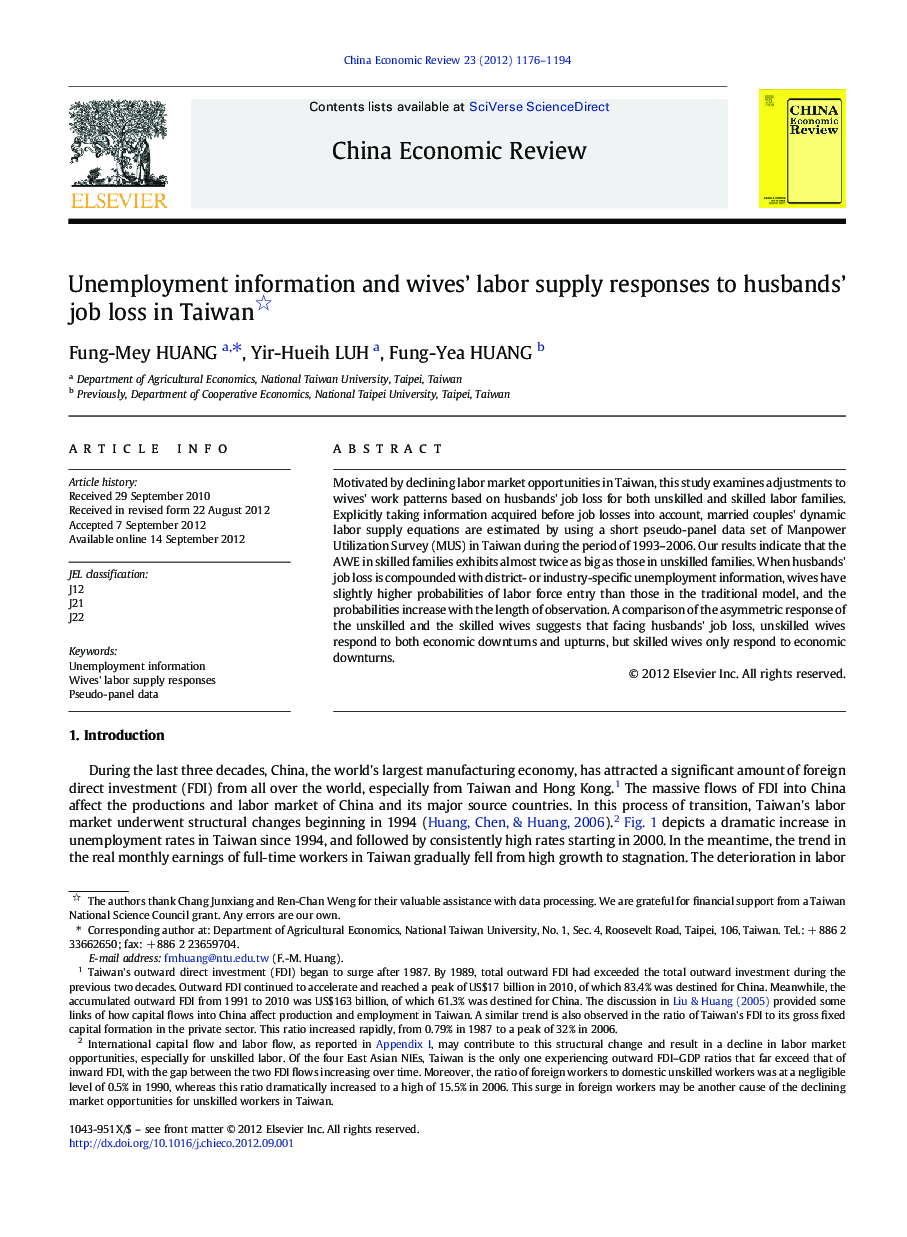| Article ID | Journal | Published Year | Pages | File Type |
|---|---|---|---|---|
| 5047762 | China Economic Review | 2012 | 19 Pages |
Motivated by declining labor market opportunities in Taiwan, this study examines adjustments to wives' work patterns based on husbands' job loss for both unskilled and skilled labor families. Explicitly taking information acquired before job losses into account, married couples' dynamic labor supply equations are estimated by using a short pseudo-panel data set of Manpower Utilization Survey (MUS) in Taiwan during the period of 1993-2006. Our results indicate that the AWE in skilled families exhibits almost twice as big as those in unskilled families. When husbands' job loss is compounded with district- or industry-specific unemployment information, wives have slightly higher probabilities of labor force entry than those in the traditional model, and the probabilities increase with the length of observation. A comparison of the asymmetric response of the unskilled and the skilled wives suggests that facing husbands' job loss, unskilled wives respond to both economic downturns and upturns, but skilled wives only respond to economic downturns.
